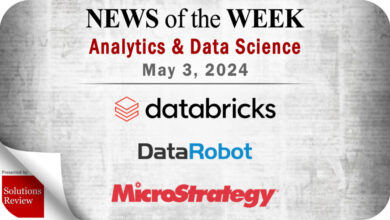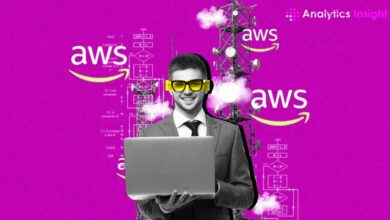Is Data Analytics Hard? | George Fox University

by Doretha Clemon, PhD
How do you make informed decisions to move a business forward? Companies can’t predict the future, but they can use data to drive decisions – especially if there are dedicated data experts on the team.
Whether it’s understanding customers’ buying habits, providing performance metrics to guide business strategy, or finding solutions to pressing issues, data analysts play a critical role in the success of an organization.
Is it hard to learn data analytics?
No, it’s a learned skill set that just about anyone can master with dedication and time. Many programs – from bachelor’s degree to certificate-level learning – are designed to help you build core skills and apply your knowledge to practical experiences.
Mastering data analytics requires becoming data fluent and comfortable with skills like statistical modeling, qualitative analysis, creating data sets, and transforming data into relevant business insights.
What do data analysts do?
Data analytics is the science of analyzing data. Data analysts collect, process and analyze large structured and unstructured datasets – like documents, images, email, videos, journals, books, social media posts, files – from both internal and external systems. They uncover patterns and draw conclusions, then present findings in user-friendly formats such as reports, dashboards, charts and graphs.
The goal? To improve the efficiency and productivity of an organization through optimized and evidence-based decision making.
The demand for data analysts is predicted to grow 23% – much faster than other industries – between 2021 and 2031. In 2022, data scientists earned a median salary of $103,500 and data analysts earned an average salary of $83,800.
What’s the difference between data analytics and data science?
Data science is a broader field that encompasses data analytics. Data analytics is the process and practice used by data analysts and data scientists to understand and evaluate data.
Data analytics uses tools like cloud computing, Internet of Things (IoT) and artificial intelligence technology to provide organizations with actionable insights. Data analytics is used to analyze existing data to support business processes and decisions. Furthermore, many functions of data analytics using machine learning modeling can help an organization make predictions for better decision making.
Within the realm of data analytics, there are three categories:
-
Descriptive Analytics
Summarizing historical data to draw inferences and produce actionable statistical samples from a population dataset.Example: Sampling randomly chosen voters exiting a polling station on election day to derive statistical inferences about the preferences of the entire population
-
Predictive Analytics
Using data to predict future business scenarios. Often this means leveraging probabilistic models to exploit patterns in historical data and estimate potential outcomes, risks and opportunities, or forecast behavior.Example: Using buying history to predict future purchases
-
Prescriptive Analytics
Automating business decisions and processes based on data. Uses descriptive and predictive analysis to recommend a contextual course of action.Example: A stock broker’s analysis of predicted prices of stocks in an investor’s portfolio to recommend the best buy-sell options for a client
Basic Principles of Data Analytics
- Make sure the data is clean
- Understand how the data was collected/measured
- Segment the data
- Account for noise and natural fluctuations
- Focus on what matters most (KPIs, etc.)
What kind of skills and software do data analysts need?
Broadly speaking, you’ll need a variety of skills to succeed as a data analyst, including:
- Technical skills
- Math and statistics skills
- Industry and domain knowledge
- Experience with data cleaning and prep
- Problem-solving and critical thinking skills
- Communication skills
- Logical and analytical skills
- Project management skills
- Data interpretation and reporting skills
In addition, you’ll need to be familiar with specific tools, which may include:
- Business intelligence, data visualization and data manipulation tools: Tableau, Microsoft Power BI, Google BigQuery, IBM Cognos, AWS, Informatica, Microsoft Excel, MS-Access, SAP, SPSS.
- Programming and scripting languages: Python, R, C++, JavaScript, Visual Basic, Matlab, SAS.
- Database languages: SQL, NoSQL, MariaDB, MongoDB, PostgreSQL, Oracle.
How long does it take to become a data analyst?
It depends entirely on your experience. To become an entry-level data analyst, you’ll need at least some on the job training, ideally combined with a formal course or two. If you have experience in a related field – perhaps you’ve worked in IT or as a business or financial analyst – then transitioning into a data analytics field should be fairly easy.
Whether you have very little experience or years of related work history, you will likely benefit from formal courses. To learn best practices and master the core competencies of data analytics, there are several options:
The best option depends on your career goals and current education level. For instance, if you are thinking about transitioning into the field of data analytics and don’t yet have a bachelor’s degree, an online accelerated data analytics degree would be a smart move – advancing your education level while preparing for a new role.
While you can become a data analyst without a degree, a college certificate or degree will set you above other candidates in the hiring process. A certificate program can be a great place to start, but generally a bachelor’s degree will lead to higher earnings.
Data analytics is a fast-growing field with lots of opportunity for growth. It requires specific training and expertise, and there are many avenues to gain the knowledge and skills you need.
Doretha Clemon, PhD, is a retired IBM executive who spent her career in IT and business. She started out as a software developer, making her way to CEO of a computer consulting firm, then spent 24 years at IBM advising on budgeting and forecasting. With over 30 years of teaching experience, she is working on a second PhD in finance and management information systems and is a regular contributor to Investopedia and The Balance online magazines.



